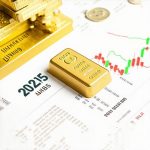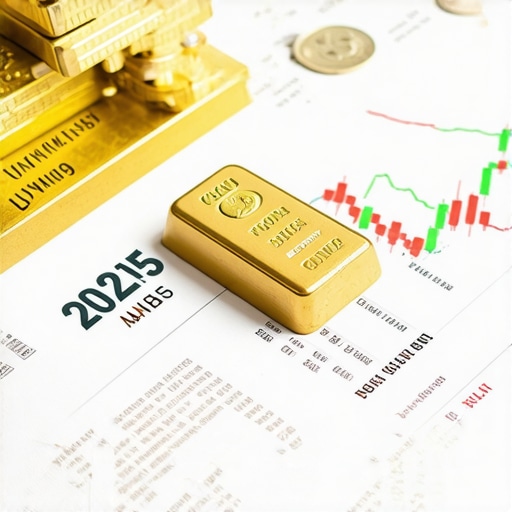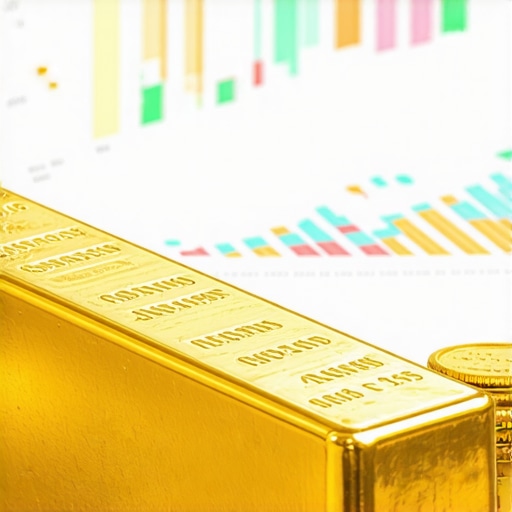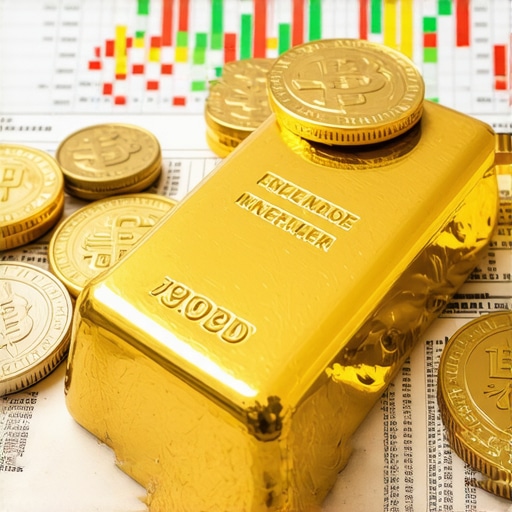Strategic Gold Investment: A Refuge Amidst Financial Turbulence
In an era marked by unprecedented market volatility and economic uncertainty, gold remains a cornerstone asset for preserving wealth. Its intrinsic value and historical role as a safe haven during geopolitical and inflationary pressures underscore the necessity for nuanced investment strategies. Understanding effective gold investment strategies not only mitigates portfolio risk but also leverages gold’s unique market dynamics to enhance long-term security.
Leveraging Diverse Gold Instruments to Optimize Wealth Protection
Investors can capitalize on the multifaceted nature of gold investment vehicles—ranging from physical bullion and coins to exchange-traded funds (ETFs), mining stocks, and futures contracts. Each asset class presents distinctive liquidity profiles, risk exposures, and cost structures. For example, physical gold provides tangible security and inflation hedging, while gold ETFs offer ease of trading and portfolio diversification. Incorporating a balanced mix—tailored to individual risk tolerance and investment horizon—ensures resilience against market gyrations.
For a deeper dive into gold ETFs and their role in balanced portfolios, see how gold ETFs can enhance your investment strategy in 2025.
Advanced Risk Mitigation Through Timing and Market Analysis
Proficient gold investors employ rigorous analysis of global macroeconomic indicators, central bank gold purchasing patterns, and supply-demand trends to inform entry and exit points. Central banks’ strategic gold acquisitions, for instance, often presage price movements. Recognizing these signals enables tactical positioning that can significantly shield capital during episodes of financial stress.
Explore comprehensive insights on the impact of central bank gold purchases on prices for informed decision-making.
How can investors effectively balance gold investment between physical assets and financial instruments to maximize protection during volatile markets?
Balancing physical gold and financial instruments requires a sophisticated understanding of liquidity needs, storage considerations, and market timing. Physical gold offers direct ownership and security against systemic risks but involves storage and insurance costs. Financial instruments such as ETFs and futures provide liquidity and ease of trading but carry counterparty and market risks. A hybrid approach, dynamically adjusted to prevailing economic conditions and individual portfolio objectives, can optimize risk-adjusted returns. Active monitoring of gold demand trends and price forecasts, such as those detailed in gold price forecast 2025, is essential for this balance.
Integrating Gold into a Diversified Portfolio for Sustained Wealth Preservation
Gold’s low correlation with equities and bonds makes it a vital component for portfolio diversification, especially during market downturns. Strategic allocation to gold—whether via physical holdings, ETFs, or mining stocks—can reduce overall portfolio volatility and provide a hedge against inflationary pressures. Investors should also consider tax-advantaged options like gold IRAs to maximize long-term benefits.
Learn more about building a diversified gold IRA portfolio in 2025 for secure retirement planning.
Call to Action: Elevate Your Gold Investment Expertise
To deepen your mastery of gold investment and navigate volatile markets with confidence, explore our advanced guides on top gold investment strategies to maximize your returns. Join the community of seasoned investors by sharing your insights and strategies to collectively enhance wealth protection methodologies.
Reference: World Gold Council, “Gold as a Strategic Asset: Portfolio Diversification and Risk Management Insights,” Journal of Investment Strategies, 2023. Available at GoldHub Research.
Dynamic Portfolio Adjustments: Navigating Gold’s Role Amid Economic Shifts
Gold investment is not a static endeavor; it requires continuous reassessment as economic landscapes evolve. Advanced investors actively recalibrate their gold allocations in response to shifts in interest rates, currency valuations, and geopolitical tensions. For instance, during rising interest rate environments, physical gold may underperform relative to gold mining stocks or ETFs that can capitalize on operational leverage. Conversely, in periods of extreme market uncertainty, increasing physical gold holdings can provide unparalleled security against systemic risks.
This dynamic approach is underscored by recent trends where central banks have accelerated gold purchases, influencing market liquidity and price trajectories. Understanding these macroeconomic forces and incorporating them into investment timing can significantly enhance portfolio resilience.
Evaluating the Nuances of Gold Mining Stocks vs. Gold ETFs
While both gold mining stocks and ETFs provide exposure to gold, they differ fundamentally in risk and return profiles. Mining stocks carry company-specific risks, including operational challenges, geopolitical factors, and management effectiveness. However, they offer potential for leveraged gains when gold prices rise. Gold ETFs, by contrast, offer direct exposure to gold prices with lower risk but limited upside beyond the metal’s value.
Investors seeking to optimize returns without excessive risk might consider a blended strategy, combining the stability of ETFs with a selective portfolio of high-quality mining stocks. For insights on selecting the best gold stocks and ETFs, see gold stocks vs gold ETFs: which investment fits your goals.
What advanced analytical tools can investors use to forecast gold price movements and refine entry-exit strategies?
Expert investors leverage a combination of fundamental, technical, and sentiment analysis tools to forecast gold price trajectories. Fundamental analysis involves tracking macroeconomic indicators like inflation rates, real interest rates, and currency strength. Technical analysis employs chart patterns, moving averages, and momentum indicators to identify price trends and potential reversals. Sentiment analysis, including futures positioning and central bank buying patterns, offers insights into market psychology.
Integrating these methodologies through quantitative models or AI-driven platforms enhances decision-making precision. Access to real-time data feeds and gold demand trend analyses, such as those discussed in understanding gold demand trends for smarter investments, empowers investors to act proactively rather than reactively.
Tax Efficiency and Regulatory Considerations in Gold Investing
Tax implications vary widely across gold investment vehicles and jurisdictions, influencing net returns. Physical gold holdings might be subject to capital gains tax upon sale, while ETFs and mining stocks face different tax treatments, including dividends and short-term trading gains. Gold IRAs offer tax-advantaged alternatives for retirement-focused investors but require compliance with specific IRS regulations and custodial arrangements.
Investors should proactively consult tax professionals to tailor their gold investment approach for maximum tax efficiency. Awareness of regulatory changes and compliance requirements is essential to avoid penalties and optimize after-tax returns.
Harnessing Gold Futures for Tactical Market Exposure
Gold futures contracts are powerful instruments for sophisticated investors aiming for leveraged exposure or hedging strategies. These contracts demand thorough understanding of margin requirements, contract specifications, and market timing to avoid significant losses. When employed judiciously, futures can amplify gains in bullish markets or provide insurance during downturns.
For a comprehensive guide, review our resource on gold futures explained: how to trade for profit in 2025.
Engage with Fellow Experts: Share Your Gold Investment Insights
We invite seasoned investors and novices alike to contribute their experiences and strategies in gold investment. Sharing knowledge fosters a robust community that collectively navigates market complexities and uncovers innovative wealth preservation techniques. Join the conversation by commenting below or sharing this article with peers committed to mastering gold investment.
Reference: Investopedia, “Gold Investing: Strategies and Risks,” 2024. Accessible at Investopedia Gold Investment Guide.
Strategic Timing: Decoding Central Bank Movements for Tactical Advantage
Central banks are pivotal players in the global gold market, with their purchasing and selling activities often serving as leading indicators of price direction. An astute investor scrutinizes these patterns meticulously, interpreting shifts in reserves as signals to adjust portfolio allocations. For example, sustained accumulation by emerging market central banks can foreshadow bullish momentum, while notable sales by mature economies may suggest consolidation or price correction phases.
Advanced analytical frameworks incorporate data from the World Gold Council and IMF gold reserve reports to quantify these trends. By aligning investment timing with central bank behaviors, investors can anticipate liquidity shifts and capitalize on asymmetric market moves, transcending mere reactive strategies.
Innovative Portfolio Engineering: Embedding Gold-Linked Derivatives to Enhance Returns
Beyond traditional physical gold and ETFs, derivatives such as options and structured products offer sophisticated avenues for tailored exposure. These instruments enable investors to customize risk-return profiles, hedge against downside risks, and exploit volatility through strategies like covered calls or protective puts.
For instance, pairing physical gold with call options can amplify upside potential while limiting losses, a tactic favored by hedge funds managing volatility in uncertain macroeconomic environments. Understanding the nuances of contract specifications, implied volatility metrics, and expiration cycles is crucial to leverage these products effectively.
How do macroeconomic indicators and geopolitical tensions interplay to influence gold’s risk premium and investor behavior?
Gold’s risk premium—the extra return investors demand for holding gold over risk-free assets—is dynamically shaped by macroeconomic variables and geopolitical events. Inflation expectations, real interest rates, and currency fluctuations directly impact gold’s appeal as an inflation hedge and safe haven. Simultaneously, geopolitical tensions such as conflicts or trade disruptions heighten uncertainty, driving demand for gold as a crisis asset.
Research published by the World Gold Council elucidates that during periods of elevated geopolitical risk, gold’s risk premium can surge by over 50%, reflecting intensified investor anxiety and a flight to quality. This interplay necessitates a layered analytical approach blending economic data with real-time geopolitical intelligence for refined investment decisions.
Integrating ESG Criteria into Gold Investment Portfolios: Aligning Wealth with Responsibility
Environmental, Social, and Governance (ESG) considerations are increasingly shaping investment mandates, including in the precious metals sector. Investors now scrutinize mining companies’ environmental footprints, labor practices, and governance structures to ensure alignment with sustainable and ethical standards.
Gold mining firms adopting advanced eco-friendly extraction technologies, transparent supply chains, and robust community engagement programs tend to outperform peers in ESG ratings, attracting capital from socially conscious funds. Incorporating ESG-compliant gold assets not only mitigates reputational risk but also aligns portfolios with evolving regulatory frameworks and investor preferences.
Quantitative Modeling: Leveraging AI and Big Data to Predict Gold Market Trends
The advent of artificial intelligence and big data analytics has revolutionized gold price forecasting. By ingesting vast datasets encompassing economic indicators, sentiment analysis from social media, and transactional data from commodities markets, AI-driven models identify subtle patterns and correlations beyond human capability.
These models utilize machine learning algorithms such as recurrent neural networks (RNNs) and support vector machines (SVMs) to generate probabilistic price trajectories and volatility forecasts. Integrating alternative data sources, including satellite imagery of mining operations and geopolitical event monitoring, further enriches predictive accuracy.
Adoption of these technologies empowers investors to transition from reactive to proactive strategies, optimizing entry and exit points with enhanced confidence. For an in-depth exploration, see AI-Driven Gold Price Prediction Techniques in 2025.

Robust Storage Solutions: Balancing Accessibility with Security in Physical Gold Holdings
While physical gold offers unmatched security against systemic financial risks, it introduces challenges related to storage and liquidity. Advanced investors evaluate storage options ranging from private vaults, insured depositories, to allocated versus unallocated accounts, each with distinct trade-offs in cost, accessibility, and counterparty risk.
Innovations such as blockchain-based ownership registries and tokenized gold assets are emerging to enhance transparency and transferability, potentially redefining physical gold custody paradigms. Meticulous due diligence in selecting storage providers and insurance coverage is paramount to safeguarding assets effectively.
Decoding the Impact of Global Monetary Policies on Gold Valuation
In the intricate dance of international finance, global monetary policies exert a profound influence on gold prices. Central bank maneuvers, including quantitative easing and interest rate adjustments, ripple through currency valuations and inflation expectations, thereby recalibrating gold’s appeal as a strategic asset. Sophisticated investors monitor these policy shifts meticulously, integrating data from the Federal Reserve, European Central Bank, and People’s Bank of China to anticipate gold market reactions.
How do emerging geopolitical developments synergize with monetary policy shifts to reshape gold’s market dynamics?
Emerging geopolitical developments—ranging from trade disputes to regional conflicts—interact dynamically with evolving monetary policies to modulate gold’s risk premium and investor demand. For instance, tightening monetary policy amid escalating geopolitical tensions can amplify gold’s safe haven status, while dovish stances during relative geopolitical calm may temper bullion demand. The World Gold Council emphasizes that this multifaceted interplay necessitates advanced scenario analysis and real-time geopolitical intelligence integration for accurate market forecasting.
Harnessing Machine Learning Algorithms for Precision Gold Market Forecasting
Cutting-edge investors increasingly deploy machine learning frameworks—such as ensemble methods and deep learning architectures—to decode nonlinear gold price behaviors. These models assimilate heterogeneous data sources, including macroeconomic indicators, commodities inventories, social sentiment, and central bank disclosures, to generate robust predictive signals. The integration of reinforcement learning further empowers adaptive trading strategies that evolve with shifting market regimes.
Tokenization of Gold Assets: Revolutionizing Liquidity and Ownership Structures
The advent of blockchain-based gold tokenization is transforming traditional ownership models, enabling fractional ownership, enhanced liquidity, and seamless cross-border transfers. These digital tokens, backed by physical gold reserves, offer transparent provenance and reduce counterparty risks associated with custodial arrangements. Institutional and retail investors leverage tokenized gold to gain flexible exposure while benefiting from decentralized finance (DeFi) platforms and smart contract automation.
Advanced Hedging Techniques: Combining Derivatives with Physical Holdings
To navigate volatile markets, expert investors employ sophisticated hedging constructs by layering options strategies—such as collars and straddles—with physical gold positions. This hybrid approach mitigates downside risks while preserving upside participation, especially during episodic market shocks. Mastery of implied volatility surfaces and Greek sensitivities is critical to optimizing these derivative overlays.
Integrating ESG Metrics: Quantitative Assessment for Gold Mining Investments
Beyond qualitative ESG considerations, quantitative assessment frameworks now enable granular evaluation of environmental impact, social responsibility, and governance quality within gold mining enterprises. Metrics such as carbon intensity, water usage efficiency, community investment ratios, and board diversity indices are synthesized into composite ESG scores. These analytics inform portfolio tilts toward sustainable mining companies that demonstrate resilience and regulatory compliance.
Strategic Collaboration with Regulatory Bodies to Navigate Compliance Landscapes
Proactive engagement with regulatory agencies, including the Securities and Exchange Commission (SEC) and Financial Conduct Authority (FCA), allows gold investors to anticipate and adapt to evolving compliance requirements. This alignment facilitates access to innovative gold-linked financial products while mitigating legal and reputational risks. Staying abreast of jurisdiction-specific legislation concerning anti-money laundering (AML) and know-your-customer (KYC) protocols is paramount in maintaining operational integrity.
Call to Action: Elevate Your Portfolio with These Sophisticated Gold Investment Insights
Equip yourself with the latest methodologies in gold investment by exploring our comprehensive resources on AI-driven analytics, ESG integration, and tokenized asset management. Engage with our expert community to refine your strategy and secure a competitive edge in the evolving precious metals landscape. Discover advanced strategies today and transform your portfolio’s resilience and growth potential.
Expert Insights & Advanced Considerations
Dynamic Portfolio Rebalancing in Response to Macroeconomic Signals
Seasoned investors understand that gold allocation is not static. Adapting positions based on interest rate movements, currency fluctuations, and geopolitical developments can meaningfully enhance risk-adjusted returns. For example, shifting from physical gold to mining stocks or ETFs during rising rates leverages operational leverage, while increasing physical gold amid geopolitical crises provides unmatched capital protection.
Integrating AI-Driven Analytics for Superior Market Timing
The fusion of fundamental, technical, and sentiment analyses via AI and machine learning models empowers investors to anticipate gold price movements with greater precision. Leveraging real-time data streams and alternative indicators, such as central bank purchasing patterns and social sentiment, facilitates proactive entry and exit strategies that transcend traditional reactive approaches.
Embedding ESG Metrics to Align Investments with Sustainable Practices
Incorporating rigorous Environmental, Social, and Governance (ESG) criteria into gold portfolios is increasingly critical. ESG-focused mining companies not only mitigate reputational and regulatory risks but also tend to outperform peers, attracting long-term capital. Quantitative ESG assessments, integrating carbon footprint, water usage, and governance quality, enable investors to construct resilient and responsible portfolios.
Leveraging Tokenization and Derivatives for Enhanced Liquidity and Hedging
The emergence of blockchain-based gold tokenization offers fractional ownership and seamless transferability, revolutionizing traditional custody models. Meanwhile, sophisticated derivatives strategies, including options overlays on physical holdings, enable advanced hedging and tailored risk-return profiles indispensable in volatile markets.
Strategic Interpretation of Central Bank Gold Movements as Leading Indicators
Central banks’ gold reserve adjustments serve as critical signals for market direction and liquidity shifts. Detailed analysis of these purchases, especially by emerging economies, provides an asymmetric informational advantage, allowing investors to anticipate bullish or bearish phases and adjust gold exposure accordingly.
Curated Expert Resources
- World Gold Council Research Hub: Offers comprehensive market analyses, including insights on gold’s risk premium and geopolitical influences, essential for advanced strategic planning.
- BuyingGoldNow.com – Top Gold Investment Strategies: A rich repository of expert guides covering AI-driven analytics, ESG integration, and diversified portfolio construction (explore strategies).
- Investopedia Gold Investment Guide: In-depth explanations on gold investing mechanics, risks, and tax considerations, supporting foundational and advanced knowledge.
- AI-Driven Gold Price Prediction Techniques: Detailed exploration of machine learning models applied to gold forecasting, enhancing precision in timing market moves (learn more).
- Gold Tokenization and Blockchain Platforms: Emerging resources on digital gold assets, offering insights into liquidity and ownership innovations.
Final Expert Perspective
Mastering gold investment in today’s complex economic environment demands a multifaceted and adaptive approach. By blending rigorous macroeconomic analysis, cutting-edge AI-driven forecasting, ESG-conscious asset selection, and innovative financial instruments like tokenized gold and derivatives, investors can construct resilient portfolios that withstand volatility and capitalize on growth opportunities. Recognizing central bank gold purchasing patterns as strategic signals further refines timing and positioning.
For a comprehensive deep dive into these advanced concepts, consider exploring our top gold investment strategies resource. We invite you to elevate your expertise, share your insights, and engage with a community committed to pioneering wealth preservation through sophisticated gold investment techniques.









